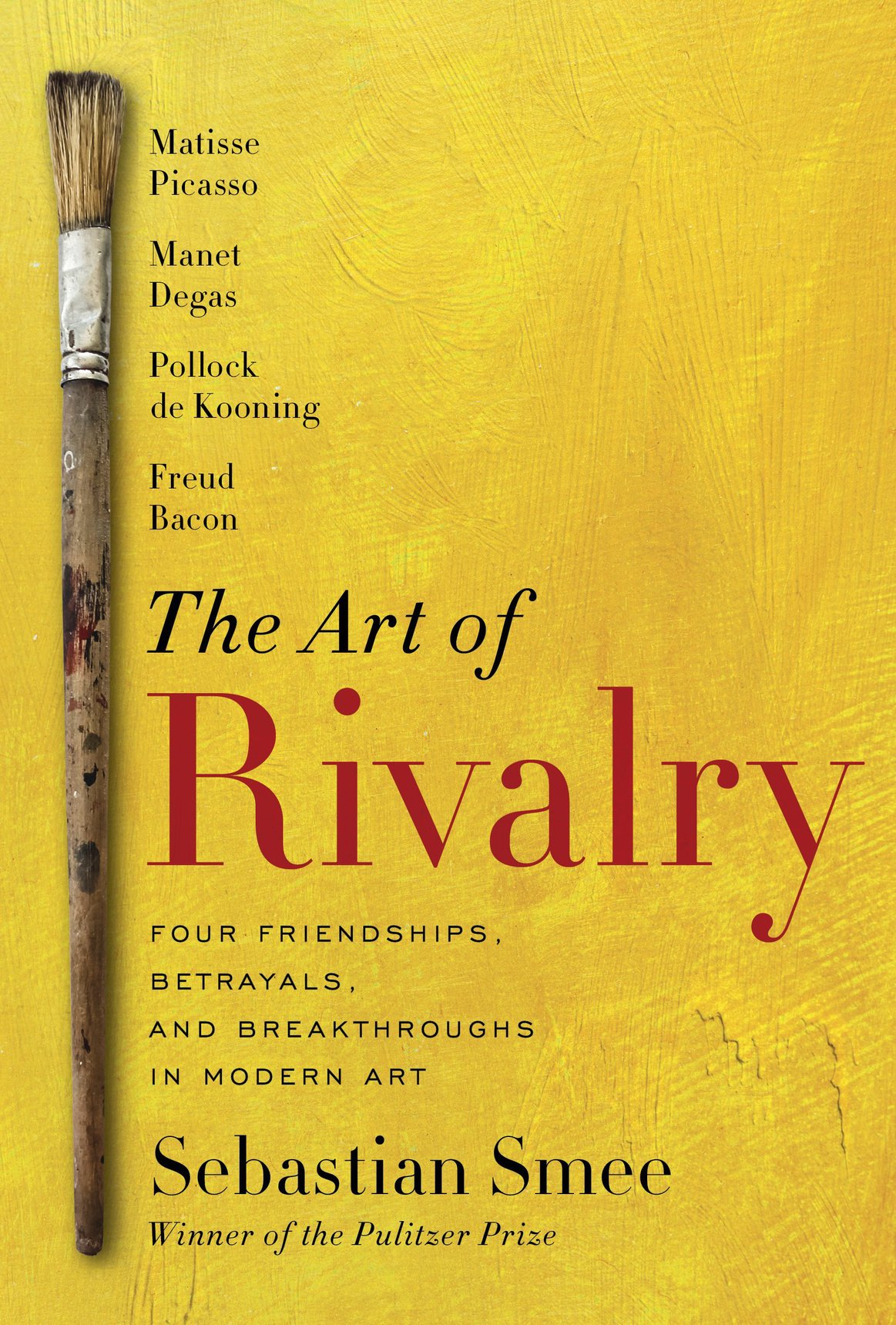
The Art of Rivalry
Four Friendships, Betrayals, and Breakthroughs in Modern Art
کتاب های مرتبط
- اطلاعات
- نقد و بررسی
- دیدگاه کاربران
نقد و بررسی

Starred review from June 6, 2016
In this beautifully written book, Pulitzer Prize–winning art critic Smee (Lucian Freud) explores the dramatic relationships between Lucian Freud and Francis Bacon, Pablo Picasso and Henri Matisse, Édouard Manet and Edgar Degas, and Jackson Pollock and Willem de Kooning. Concerned with “yielding, intimacy, and openness to influence” more than pure rivalry, Smee provides a concise biography of each pair, highlighting the similarities and differences between their lives, philosophies, and personalities. This illuminating text draws connections between the pairs (the personal tension between Degas and Manet is, for example, similar to that between Freud and Bacon) and cleverly links events in the artist’s lives, such as two parallel tragedies within Matisse and Picasso’s close families, and Freud’s and Bacon’s separate—though similarly intense and devastating—love affairs. This ambitious and impressive work is an utterly absorbing read about four important relationships in modern art.

June 1, 2016
An exploration of the relationships among eight artists who were friends, mentors, and/or rivals and the particular incidents that changed their lives.It may have been a portrait sitting, an exchange of works, a studio visit, or the opening of an exhibition. However they came to pass, writes Pulitzer Prize-winning Boston Globe art critic Smee (Nonfiction Writing/Wellesley Coll.; Freud, 2015, etc.), these relationships greatly affected the psyches of some of the greatest artists of their time. Some have cast them as rivals, others as enemies, but the author rejects many of these opinions. Francis Bacon's influence on Lucian Freud helped loosen his style, and Jackson Pollock's works drove Willem de Kooning to open up his manner of creation. All were undeniable talents, and their abilities were changed significantly by these relationships. However, none of them was ever an acolyte (imagine Pablo Picasso ever admitting anyone was better than he). Henri Matisse said it best in that he could never tolerate rivals, but he thrived in their presence. They all sought radical originality, and each man's art was affected by lovers, successes, and failures, as well as hard drinking and brave collectors of modern art like Peggy Guggenheim and Gertrude and Sarah Stein. Would Edgar Degas ever have moved out into Paris' streets without Edouard Manet's urging, or would Picasso ever have moved to cubism without the specter of Matisse's maturity and pressure? In addition to digging into these intimate relationships, Smee explains their work in in an accessible way. He clearly and vividly explains the monumental effect each man had on modern art, from Manet's daring Olympia to Pollock's Number 1. Smee takes readers deep into the beginnings of modern art in a way that not only enlightens, but also builds a stronger appreciation of the influences that created the environment that fostered its development.
COPYRIGHT(2016) Kirkus Reviews, ALL RIGHTS RESERVED.

Starred review from August 1, 2016
Pulitzer Prizewinning art critic Smee takes a fresh and fruitful approach to art history by focusing on the role of friendship and rivalry in the lives and art of eight modern artists who redefined painting. Each daring creator benefited from both the comfort of camaraderie and the spur of competition. Smee tracks this push-and-pull within four volatile friendships between artists on the cusp of major creative breakthroughs. With vibrant language and clarion insights, Smee reveals arresting aspects of each artist's complexities and convictions. Lucian Freud and Francis Bacon, each assertively rogue in his own way, grew close as they sought to transform portraiture, then were split asunder by the darker aspects of their lives. Temperamental opposites, Degas and Manet forged an up-and-down friendship that barely survived Manet's slashing of Degas' painting of him and his wife. Smee covers the famous battle between Matisse and Picasso, two geniuses of invention, with keen recognition of the subtle martial arts maneuvers they performed in a choreography of influence and challenge, homage and resistance. Smee's revelations about the friendship between classically trained de Kooning and wildly improvising Pollock evoke musings about creativity, success, and self-destruction. Smee's double portraits are deeply moving, even haunting in their investigations of artistic and emotional symbioses of incalculable intricacy and consequence.(Reprinted with permission of Booklist, copyright 2016, American Library Association.)

























دیدگاه کاربران